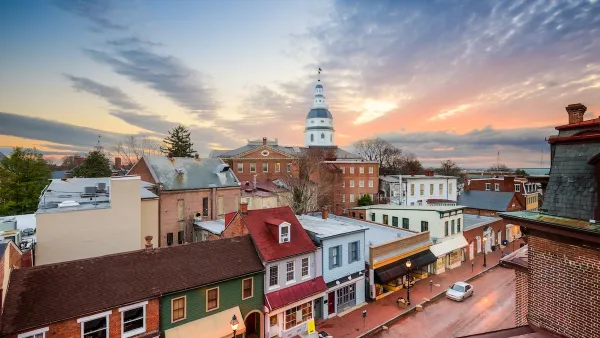Last Friday, I was in two different suburban environments in Atlanta. Both are sprawl by any normal definition of the term - car-oriented environments where residential streets are separated from commerce, sidewalks are rare, and densities are low. But the two places are as different as sprawl and new urbanism.
Last Friday, I was in two different suburban environments in
Atlanta. Both are sprawl by any normal definition of
the term - car-oriented environments where residential streets are separated from commerce, sidewalks are rare, and densities are low. But the two places are as different
as sprawl and new urbanism.
On the way into town, I prayed at a synagogue in Sandy Springs (an inner ring suburb) and then walked
along a residential street to a nearby commercial street Both the residential street and commercial
street were not very pedestrian-friendly: there were no sidewalks on the residential
street, and the commercial street was perhaps a couple of lanes too wide to be
truly comfortable for pedestrians.
But this area (or as I call it, "Sprawl Heck") has its
consolations. While the residential
street did lack sidewalks, it at least had lawns to walk on so I didn't have to
walk in the street most of the time (much like these streets from
neighboring Atlanta suburbs:
http://atlantaphotos.fotopic.net/p14010326.html
and
http://atlantaphotos.fotopic.net/p14010324.html )
Traffic calming measures kept Sprawl Heck cars
going relatively safe speeds. And even
though the residential streets don't connect very well to each other, they are
reasonably close to a commercial street with sidewalks and bus stops.
By contrast, I spent the rest of the weekend with family
members. They live in an area that I
would describe as "Sprawl Hell." In
Sprawl Hell, trees go right up to the street so there's no way to avoid walking
on the street. And on many of Sprawl
Hell's residential streets, traffic goes 40 mph. So in Sprawl Hell, walking can be pretty
dangerous.
(For some examples, see
http://atlantaphotos.fotopic.net/p50930564.html
and
http://atlantaphotos.fotopic.net/p50930560.html )
And the nearest commercial street, about a mile and a half
away, is a highway which also lacks sidewalks:
http://atlantaphotos.fotopic.net/p50930562.html
In sum, not all car-oriented suburbs are equally bad. The mere addition of sidewalks, or some limits on
foliage near streets, can elevate a suburb from terrible to merely mediocre.

Analysis: Cybertruck Fatality Rate Far Exceeds That of Ford Pinto
The Tesla Cybertruck was recalled seven times last year.

National Parks Layoffs Will Cause Communities to Lose Billions
Thousands of essential park workers were laid off this week, just before the busy spring break season.

Retro-silient?: America’s First “Eco-burb,” The Woodlands Turns 50
A master-planned community north of Houston offers lessons on green infrastructure and resilient design, but falls short of its founder’s lofty affordability and walkability goals.

Test News Post 1
This is a summary

Analysis: Cybertruck Fatality Rate Far Exceeds That of Ford Pinto
The Tesla Cybertruck was recalled seven times last year.

Test News Headline 46
Test for the image on the front page.
Urban Design for Planners 1: Software Tools
This six-course series explores essential urban design concepts using open source software and equips planners with the tools they need to participate fully in the urban design process.
Planning for Universal Design
Learn the tools for implementing Universal Design in planning regulations.
EMC Planning Group, Inc.
Planetizen
Planetizen
Mpact (formerly Rail~Volution)
Great Falls Development Authority, Inc.
HUDs Office of Policy Development and Research
NYU Wagner Graduate School of Public Service



























